DFB
Well-known member
- Aug 12, 2019
- 5,020
- 3,233
Koch Chemie Rapid Rinse-less Wash RRW
Over the last 12 – 18months, it seems as if a new rinse-less wash hits the market every week! Where once it was a choice between Optimum No Rinse, McKee’s N-914 or Carpro ECH20, just about every brand is going down this path, even Bowden’s have one now. And so, now Koch Chemie have a player in this segment, Rapid Rinse-less Wash RRW.
RRW was released in the US early last year but has only just now gone on sale in Australia. From what I can tell, RRW was created with heavy input from The Rag Company. In early testing, it was said to be on aggressive side, which led to KCx dialing back some of its cleaning ability. Still, looking at the specs and after hearing some feedback on the product, I would say RRW is one of the stronger cleaning rinse-less washes on the market.
As seems to be the current trend, RRW is a surfactant-polymer hybrid and contains Si02 to boost gloss and slickness. With a pH of 4.0, RRW has an acid leaning formulation, which would explain its higher cleaning capabilities. But that number raises to about 8.0 when diluted, which is where the claim of preserving existing waxes, sealants and coatings comes from.
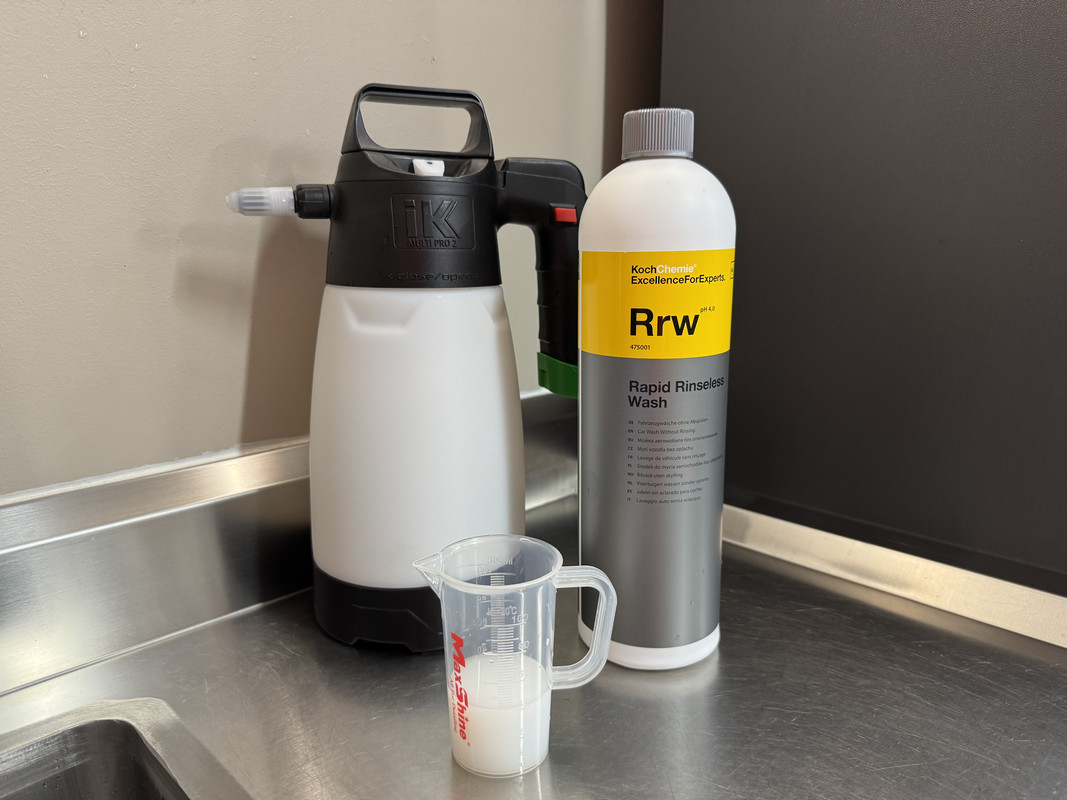
How To Use –
The basic concept of rinse-less washing is that you rinse less. I say this because there are multiple ways to perform a rinse-less wash. Some will pre-rinse before starting, some will go straight to the wash, some will compromise and pre-treat the surface with the same dilution ratio mixed in the bucket and then commence the wash. Some will use a singular wash pad/sponge, some will use multiple towels/pads. The end result is the same, it’s how you got there that differs. Again, I say this because the following “Garry Dean”/Multiple Towel Method is how I rinse-less wash, but its not the be-all-end-all………………………….
1. Mix up your bucket solution. RRW is mixed at the same 256:1 as most other rinse-less washes on the market. I like to mix up 10-litres as it gives me plenty of solution to fill up my sprayer for the pre-soak. To 10-litres of water, add 40ml of RRW and stir with your hand to mix.
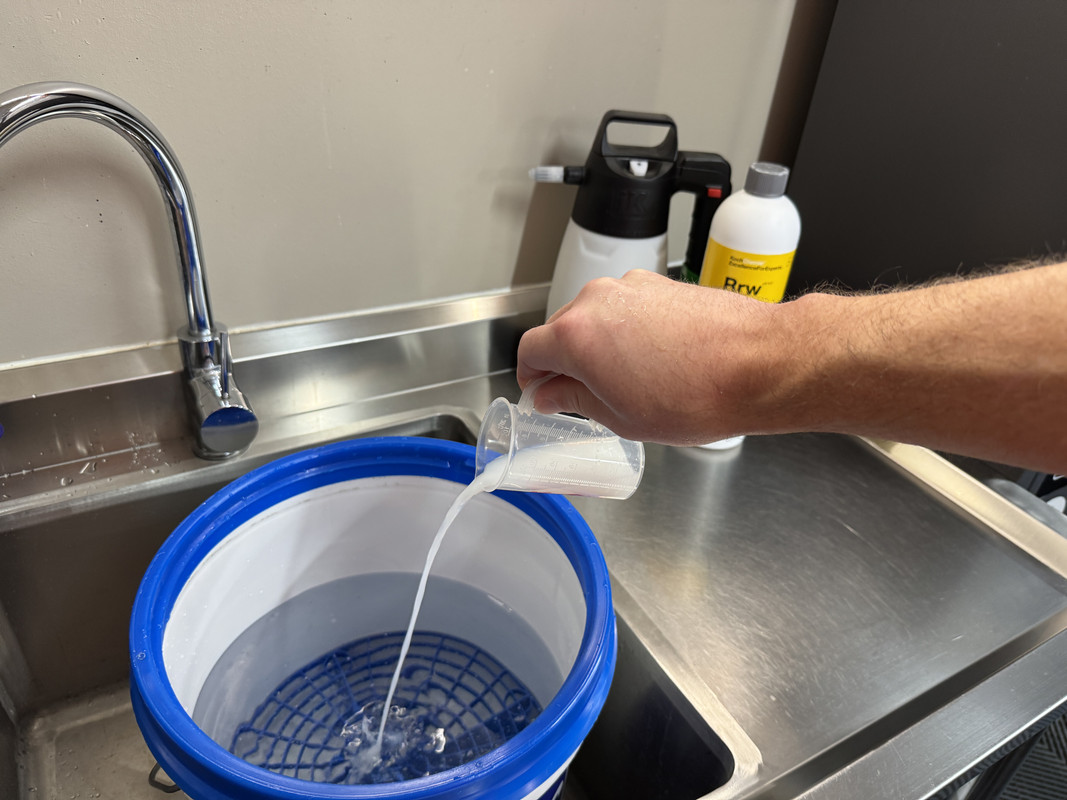
2. From this bucket solution, fill up your sprayer, in my case an iK Multi Pro 2 pump action sprayer. You can then add your towels to the bucket, in this case TRC Eagle Edgeless 500's.

3. I like to pre-treat the whole vehicle in one go, although if it’s a hot day, you may want to break the vehicle into sections. I particularly target areas with bugs and horizontal surfaces. The pre-soak starts breaking down and encapsulating the dirt/dust/bugs ect. Even though you don’t have lots of soap and water in play, it’s this encapsulation that makes rinse-less safe.
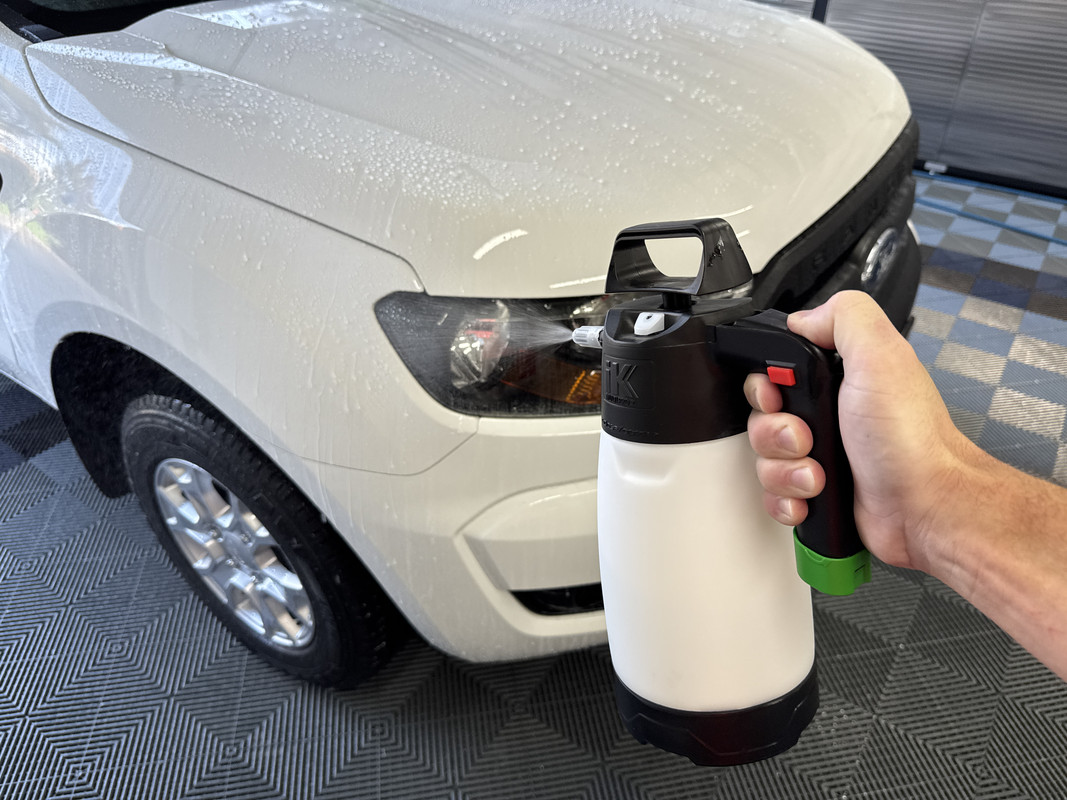
4. Take a towel out of your bucket and ring out till just dripping. Then fold the towel in half, and in half again. This gives you eight towel sides.
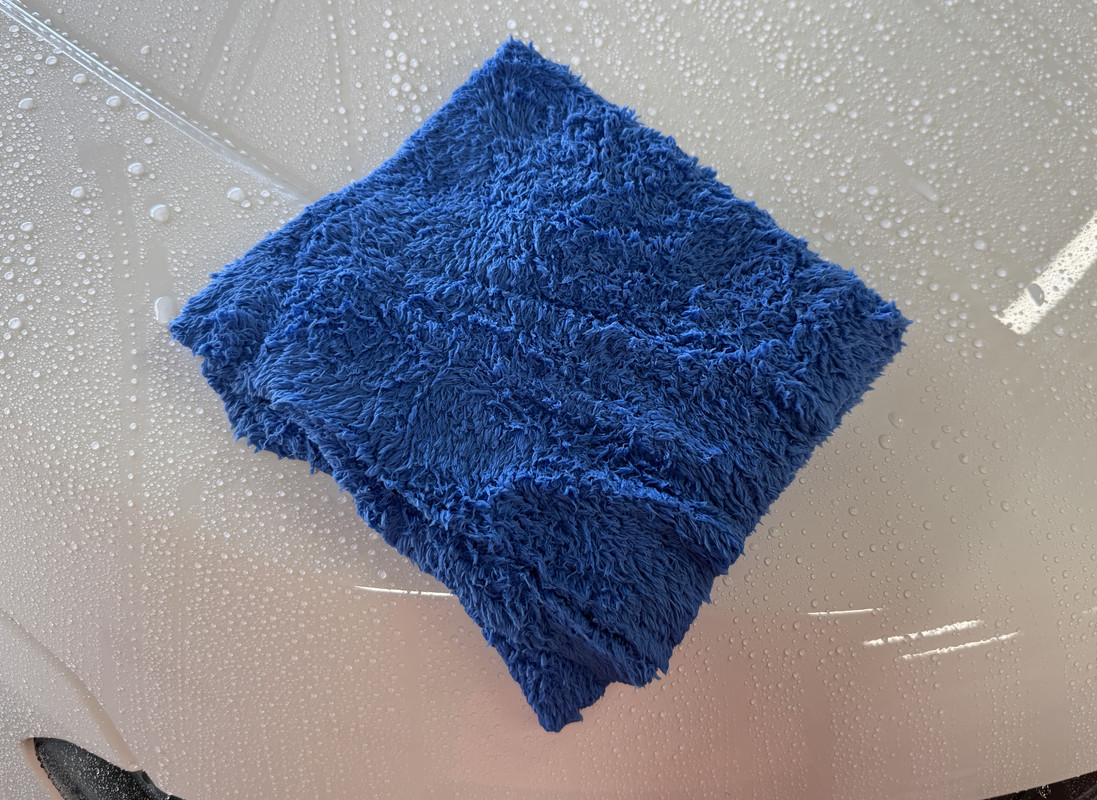
5. Working in sections, wipe in straight lines, swapping/folding to a new side of the towel as you go. This multiple towel method means a used towel never re-enters the bucket, which means your cleaning solution never becomes dirty. As you work around the car, grab a fresh towel as needed.
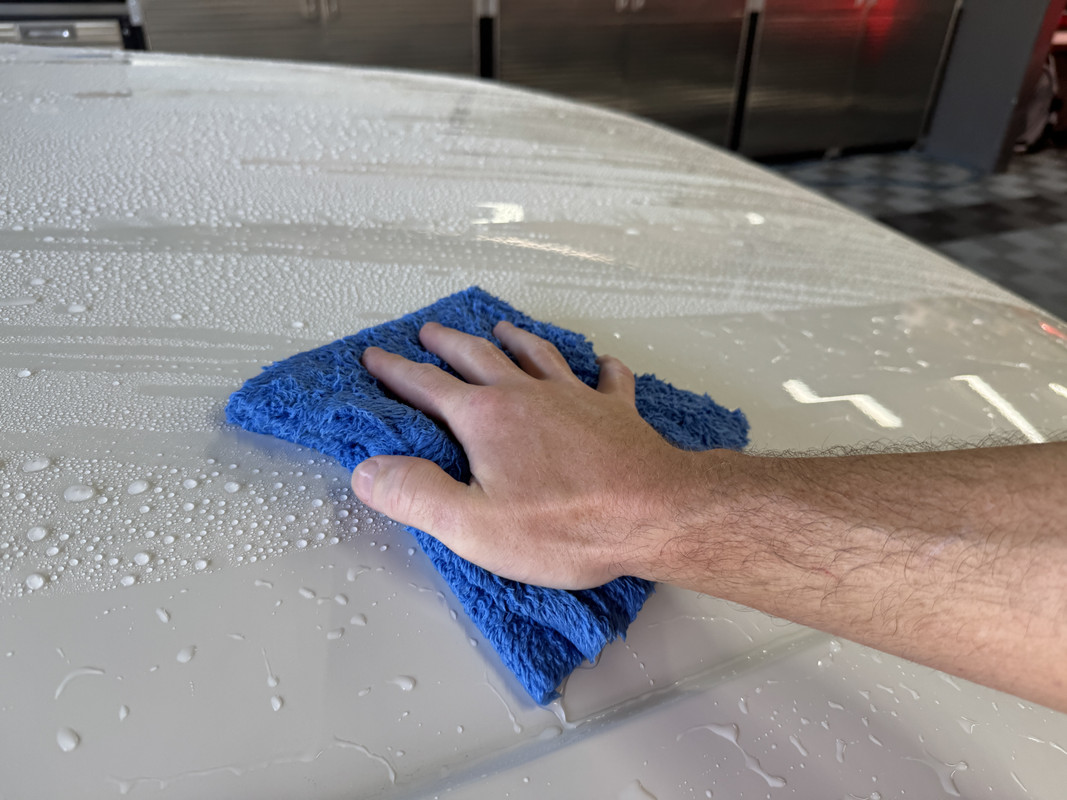
6. You can then dry the car as you finish a section, or like me, I go around and dry once I’m finished washing the whole car. You can use a drying aid, but quite often these rinse-less products are highly slick, so you don’t always need more lubrication. In my case, I paired RRW with QS, it would have been rude not to.
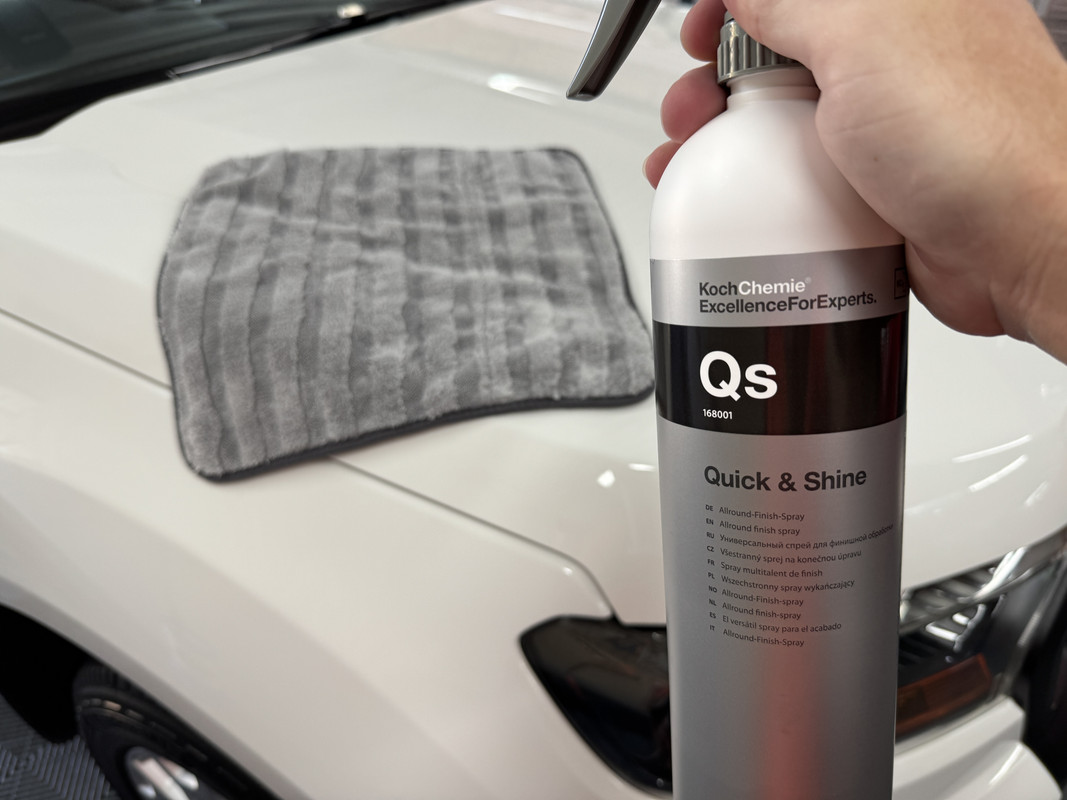
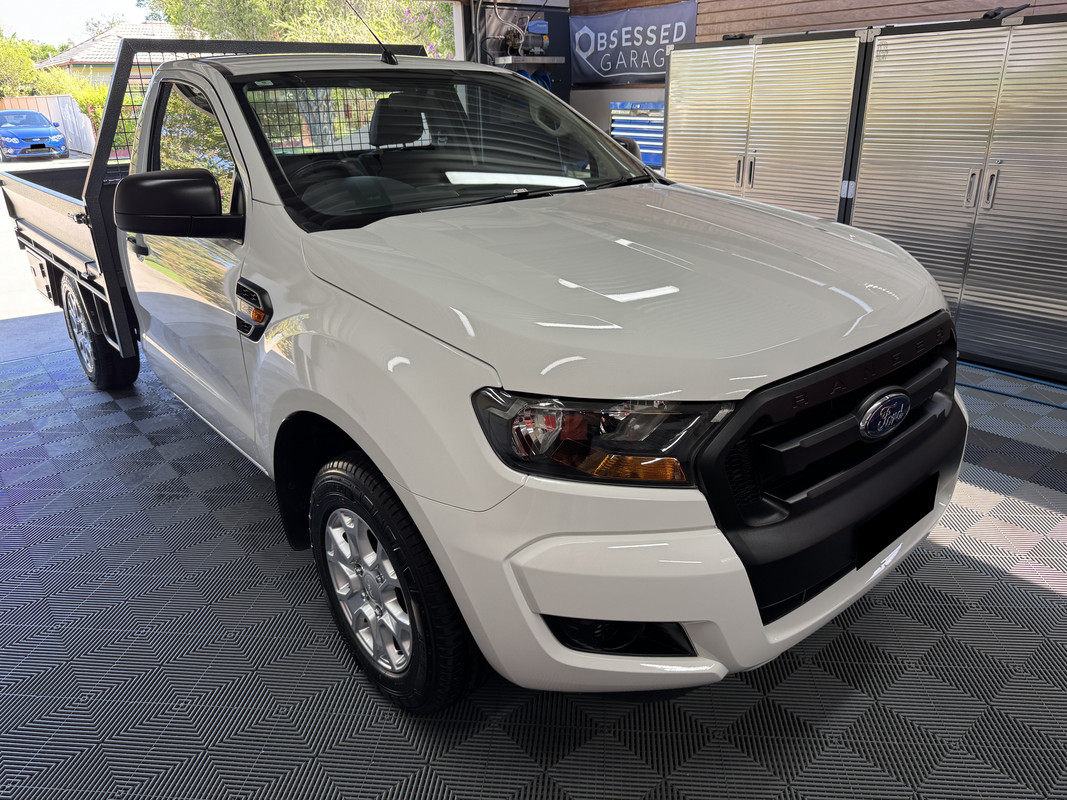
Usage Notes -
- I pick my mark with rinse-less. I know it can be used on heavily soiled vehicles, but my limit is a dusty vehicle with or without very mild wet road film. Outside of that, I’m using soap.
- Just because this wash method is called rinse-less, that doesn’t mean you can’t pre-rinse the car. Compared to a soap, you are not rinsing off the residue afterwards, rather you go straight to the drying process.
- If you struggle with dilution ratios like me, then the following website makes it easy – https://www.omnicalculator.com/everyday-life/dilution-ratio
- Mixing up your solution using warm water can be beneficial, but not crucial. I like using warm water for winter washing, if nothing more than to keep my hands warm.
- Depending on the size of the car, you will use about 1.5 – 2.0-litres of pre-soak solution. That’s why I mix up 10-litres.
- Specific to RRW, Koch Chemie stress not using this product in direct sunlight, presumably because of the acidic pH value. I would also avoid letting it dry on the vehicle.
- Because of its extra cleaning ability, I probably wouldn't use RRW for interior cleaning, clay lubricant or quick detailer duties. If you are buying a rinse-less for versatility, I'd probably favor ONR or N914.
- RRW has quite a nice floral scent, which will perfume your working area before, during and after the wash.
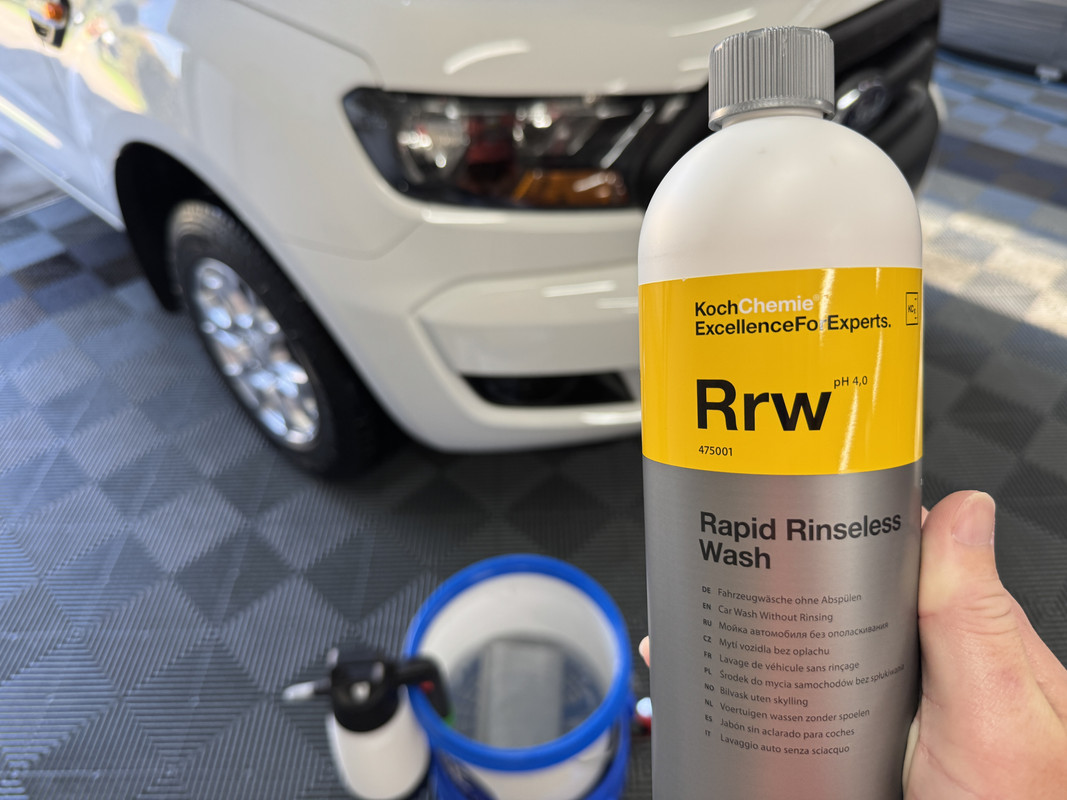
Final Thoughts -
Rinse-less wash products keep getting better and better, of which I think the most pronounced progress has been with the ease of drying. Some of the older products would end up being pushed around by the towel, whereas these newer options are easily absorbed into the towel without streaking or excessive effort.
RRW is certainly from the new school, it's easy to work with, offers excellent cleaning ability and smells great. If cleaning power is a key requirement, RRW is your product. If ultimate gloss, slickness and lubrication are your requirements, I'd probably still favor products like P&S Absolute, Gyeon EcoWash and ADS Hero.
Over the last 12 – 18months, it seems as if a new rinse-less wash hits the market every week! Where once it was a choice between Optimum No Rinse, McKee’s N-914 or Carpro ECH20, just about every brand is going down this path, even Bowden’s have one now. And so, now Koch Chemie have a player in this segment, Rapid Rinse-less Wash RRW.
RRW was released in the US early last year but has only just now gone on sale in Australia. From what I can tell, RRW was created with heavy input from The Rag Company. In early testing, it was said to be on aggressive side, which led to KCx dialing back some of its cleaning ability. Still, looking at the specs and after hearing some feedback on the product, I would say RRW is one of the stronger cleaning rinse-less washes on the market.
As seems to be the current trend, RRW is a surfactant-polymer hybrid and contains Si02 to boost gloss and slickness. With a pH of 4.0, RRW has an acid leaning formulation, which would explain its higher cleaning capabilities. But that number raises to about 8.0 when diluted, which is where the claim of preserving existing waxes, sealants and coatings comes from.

How To Use –
The basic concept of rinse-less washing is that you rinse less. I say this because there are multiple ways to perform a rinse-less wash. Some will pre-rinse before starting, some will go straight to the wash, some will compromise and pre-treat the surface with the same dilution ratio mixed in the bucket and then commence the wash. Some will use a singular wash pad/sponge, some will use multiple towels/pads. The end result is the same, it’s how you got there that differs. Again, I say this because the following “Garry Dean”/Multiple Towel Method is how I rinse-less wash, but its not the be-all-end-all………………………….
1. Mix up your bucket solution. RRW is mixed at the same 256:1 as most other rinse-less washes on the market. I like to mix up 10-litres as it gives me plenty of solution to fill up my sprayer for the pre-soak. To 10-litres of water, add 40ml of RRW and stir with your hand to mix.

2. From this bucket solution, fill up your sprayer, in my case an iK Multi Pro 2 pump action sprayer. You can then add your towels to the bucket, in this case TRC Eagle Edgeless 500's.

3. I like to pre-treat the whole vehicle in one go, although if it’s a hot day, you may want to break the vehicle into sections. I particularly target areas with bugs and horizontal surfaces. The pre-soak starts breaking down and encapsulating the dirt/dust/bugs ect. Even though you don’t have lots of soap and water in play, it’s this encapsulation that makes rinse-less safe.

4. Take a towel out of your bucket and ring out till just dripping. Then fold the towel in half, and in half again. This gives you eight towel sides.

5. Working in sections, wipe in straight lines, swapping/folding to a new side of the towel as you go. This multiple towel method means a used towel never re-enters the bucket, which means your cleaning solution never becomes dirty. As you work around the car, grab a fresh towel as needed.

6. You can then dry the car as you finish a section, or like me, I go around and dry once I’m finished washing the whole car. You can use a drying aid, but quite often these rinse-less products are highly slick, so you don’t always need more lubrication. In my case, I paired RRW with QS, it would have been rude not to.


Usage Notes -
- I pick my mark with rinse-less. I know it can be used on heavily soiled vehicles, but my limit is a dusty vehicle with or without very mild wet road film. Outside of that, I’m using soap.
- Just because this wash method is called rinse-less, that doesn’t mean you can’t pre-rinse the car. Compared to a soap, you are not rinsing off the residue afterwards, rather you go straight to the drying process.
- If you struggle with dilution ratios like me, then the following website makes it easy – https://www.omnicalculator.com/everyday-life/dilution-ratio
- Mixing up your solution using warm water can be beneficial, but not crucial. I like using warm water for winter washing, if nothing more than to keep my hands warm.
- Depending on the size of the car, you will use about 1.5 – 2.0-litres of pre-soak solution. That’s why I mix up 10-litres.
- Specific to RRW, Koch Chemie stress not using this product in direct sunlight, presumably because of the acidic pH value. I would also avoid letting it dry on the vehicle.
- Because of its extra cleaning ability, I probably wouldn't use RRW for interior cleaning, clay lubricant or quick detailer duties. If you are buying a rinse-less for versatility, I'd probably favor ONR or N914.
- RRW has quite a nice floral scent, which will perfume your working area before, during and after the wash.

Final Thoughts -
Rinse-less wash products keep getting better and better, of which I think the most pronounced progress has been with the ease of drying. Some of the older products would end up being pushed around by the towel, whereas these newer options are easily absorbed into the towel without streaking or excessive effort.
RRW is certainly from the new school, it's easy to work with, offers excellent cleaning ability and smells great. If cleaning power is a key requirement, RRW is your product. If ultimate gloss, slickness and lubrication are your requirements, I'd probably still favor products like P&S Absolute, Gyeon EcoWash and ADS Hero.


